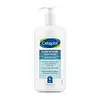What's inside
What's inside
 Key Ingredients
Key Ingredients

No key ingredients
 Benefits
Benefits

 Concerns
Concerns

 Ingredients Side-by-side
Ingredients Side-by-side

Glycine Soja Oil
EmollientRicinus Communis Seed Oil
MaskingLaureth-4
EmulsifyingSilica Dimethyl Silylate
EmollientLaureth-7 Citrate
CleansingWater
Skin ConditioningUrea
BufferingCeramide NP
Skin ConditioningCeramide AP
Skin ConditioningCeramide EOP
Skin ConditioningCarbomer
Emulsion StabilisingSodium PCA
HumectantSodium Lauroyl Lactylate
EmulsifyingSodium Hyaluronate
HumectantCholesterol
EmollientPhenoxyethanol
PreservativeTocopheryl Acetate
AntioxidantTocopherol
AntioxidantCitric Acid
BufferingHydrogenated Palm Glycerides Citrate
EmollientHydrogenated Castor Oil
EmollientPhytosphingosine
Skin ConditioningXanthan Gum
EmulsifyingEthylhexylglycerin
Skin ConditioningGlycine Soja Oil, Ricinus Communis Seed Oil, Laureth-4, Silica Dimethyl Silylate, Laureth-7 Citrate, Water, Urea, Ceramide NP, Ceramide AP, Ceramide EOP, Carbomer, Sodium PCA, Sodium Lauroyl Lactylate, Sodium Hyaluronate, Cholesterol, Phenoxyethanol, Tocopheryl Acetate, Tocopherol, Citric Acid, Hydrogenated Palm Glycerides Citrate, Hydrogenated Castor Oil, Phytosphingosine, Xanthan Gum, Ethylhexylglycerin
Water
Skin ConditioningCocamidopropyl Betaine
CleansingSodium Lauroyl Isethionate
CleansingHydroxypropyl Starch Phosphate
Sodium Chloride
MaskingLauric Acid
CleansingSodium Lauroyl Glycinate
CleansingGlycine Soja Oil
EmollientHydrogenated Soybean Oil
EmollientGlycerin
HumectantPhenoxyethanol
PreservativePalmitic Acid
EmollientStearic Acid
CleansingSodium PCA
HumectantBenzyl Alcohol
PerfumingGuar Hydroxypropyltrimonium Chloride
Skin ConditioningSodium Benzoate
MaskingArginine
MaskingTetrasodium EDTA
Butyrospermum Parkii Butter
Skin ConditioningCitric Acid
BufferingMaltodextrin
AbsorbentColloidal Oatmeal
AbsorbentLactobacillus Ferment
Skin ConditioningWater, Cocamidopropyl Betaine, Sodium Lauroyl Isethionate, Hydroxypropyl Starch Phosphate, Sodium Chloride, Lauric Acid, Sodium Lauroyl Glycinate, Glycine Soja Oil, Hydrogenated Soybean Oil, Glycerin, Phenoxyethanol, Palmitic Acid, Stearic Acid, Sodium PCA, Benzyl Alcohol, Guar Hydroxypropyltrimonium Chloride, Sodium Benzoate, Arginine, Tetrasodium EDTA, Butyrospermum Parkii Butter, Citric Acid, Maltodextrin, Colloidal Oatmeal, Lactobacillus Ferment
Ingredients Explained
These ingredients are found in both products.
Ingredients higher up in an ingredient list are typically present in a larger amount.
Citric Acid is an alpha hydroxy acid (AHA) naturally found in citrus fruits like oranges, lemons, and limes.
Like other AHAs, citric acid can exfoliate skin by breaking down the bonds that hold dead skin cells together. This helps reveal smoother and brighter skin underneath.
However, this exfoliating effect only happens at high concentrations (20%) which can be hard to find in cosmetic products.
Due to this, citric acid is usually included in small amounts as a pH adjuster. This helps keep products slightly more acidic and compatible with skin's natural pH.
In skincare formulas, citric acid can:
While it can provide some skin benefits, research shows lactic acid and glycolic acid are generally more effective and less irritating exfoliants.
Most citric acid used in skincare today is made by fermenting sugars (usually from molasses). This synthetic version is identical to the natural citrus form but easier to stabilize and use in formulations.
Read more about some other popular AHA's here:
Learn more about Citric AcidGlycine Soja Oil comes from the soybean. Glycine Soja is native to eastern Asia.
Soybean oil is an emollient. It is rich in antioxidants and fatty acids including palmitic, stearic, oleic, and linoleic acids.
As an emollient, the fatty acids in soybean oil helps keep your skin soft and hydrated. It does so by creating a film on top that traps moisture in.
Soybean oil is also rich in vitamin E, a potent antioxidant. Vitamin E is also anti-inflammatory and provides a soothing effect.
Studies show soy may help fade hyperpigmentation from UVB. It does so by disrupting the melanin process from UVB induced skin inflammation.
This ingredient may not be malassezia folliculitis, or fungal-acne, safe.
Soybeans are rich in proteins and are part of the legume family. Foods made with soybeans include tofu, soymilk, edamame, miso, and soy sauce.
Learn more about Glycine Soja OilPhenoxyethanol is a preservative that has germicide, antimicrobial, and aromatic properties. Studies show that phenoxyethanol can prevent microbial growth. By itself, it has a scent that is similar to that of a rose.
It's often used in formulations along with Caprylyl Glycol to preserve the shelf life of products.
Sodium PCA is the sodium salt of pyroglutamic acid. It is naturally occurring in our skin's natural moisturizing factors where it works to maintain hydration.
The PCA stands for pyrrolidone carboxylic acid, a natural amino acid derivative.
This ingredient has skin conditioning, anti-inflammatory, and humectant properties. Humectants help hydrate your skin by drawing moisture from the air. This helps keep your skin moisturized.
Learn more about Sodium PCAWater. It's the most common cosmetic ingredient of all. You'll usually see it at the top of ingredient lists, meaning that it makes up the largest part of the product.
So why is it so popular? Water most often acts as a solvent - this means that it helps dissolve other ingredients into the formulation.
You'll also recognize water as that liquid we all need to stay alive. If you see this, drink a glass of water. Stay hydrated!
Learn more about Water